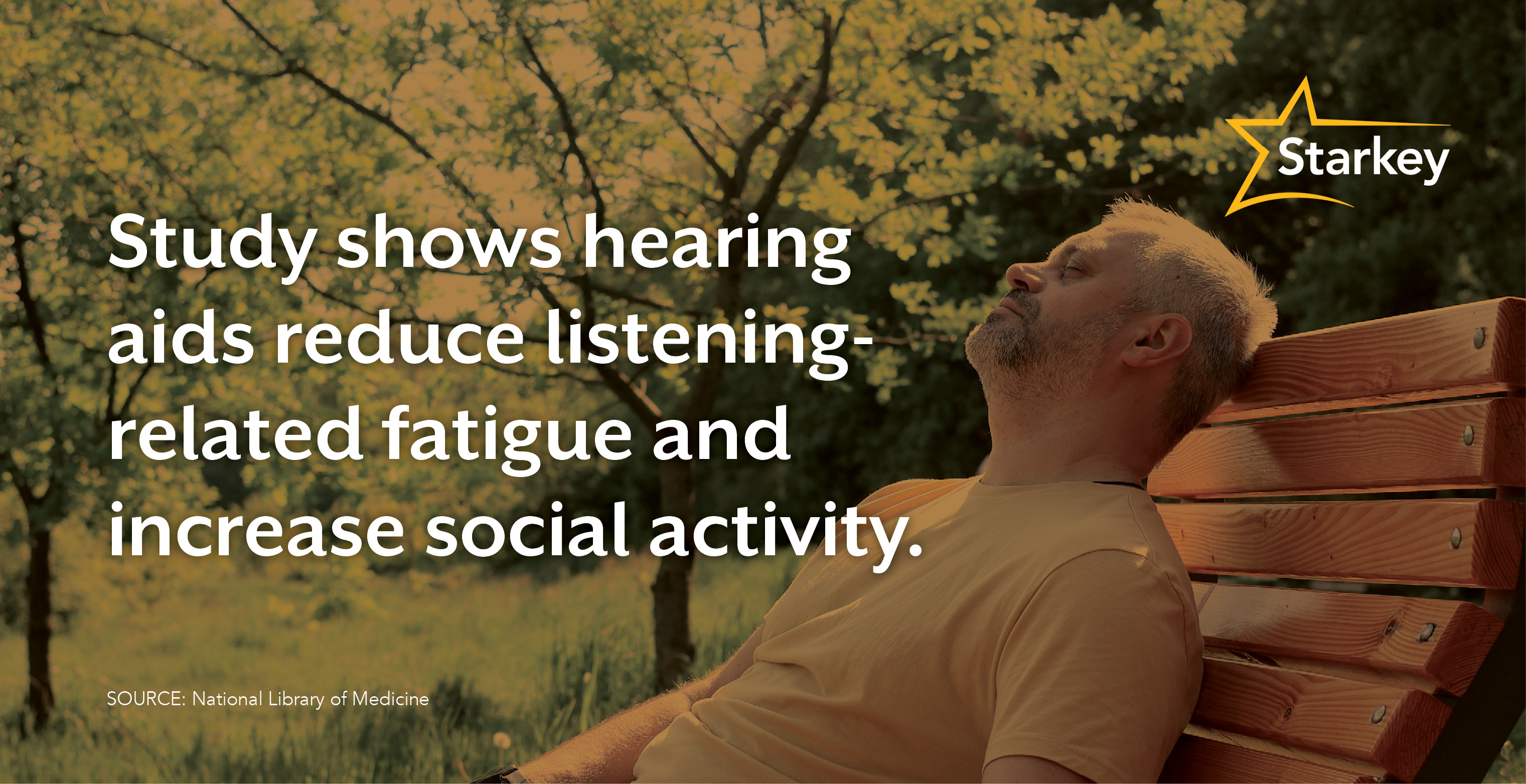As the social demands increase during this time of year—with everything from public holidays to graduation parties upon us—today’s hearing fact raises important awareness of “additional fatigue” that people with untreated hearing loss may be experiencing in their everyday lives: listening fatigue.
Listening fatigue (also called “listener’s fatigue” or “ear fatigue”) occurs when we strain to hear and interpret sound, and then experience mental, physical, and/or emotional exhaustion as a result.
After all, when we have hearing loss, our brain must work extra hard to “fill in the gaps” of missed words and understand what it is hearing. And the more/longer these listening challenges occur, the more tired, sleepy, or physically or emotionally fatigued we may become.
It’s easy to see why listening fatigue can make it difficult for us to perform at work or be active at home. What begins as a one- or two-hour work meeting or an important conversation at the breakfast table can extend to various listening situations throughout the day. Consequently, the energy expenditure involved can decrease our ability to perform further tasks or participate in activities.
So, instead of maintaining our productivity and/or engagement with others, we end up exhausted—often feeling we have no choice but to rest (let’s be real—crash) and be by ourselves. And probably more than we should be.
But there is hope—and that’s by treating our hearing loss with hearing aids, according to today’s hearing fact. Let’s dig into the study behind it and how hearing technology can help make a difference with listening fatigue.

Study examined fatigue among new, present, and non-hearing aid wearers
The study behind today’s hearing fact compared two groups of participants aged 18 to 75. One group consisted of people with hearing loss who were about to be fitted with hearing aids. The other was comprised of individuals who also had hearing loss but were either already wearing hearing aids or not wearing the devices at all.
All participants were asked to self-report outcomes at four different times: once before the hearing aid fitting, and again at two weeks, three months, and six months post hearing aid fitting.
Results
The outcome of the study revealed noticeable improvements for the newly fitted hearing aid wearers compared to the secondary group.
The new hearing aid wearers reported:
- Significant reduction in listening-related fatigue
- Increased social activity levels
- Significant decrease in social participation restriction
As this evidence shows, hearing aids play an important role in helping wearers listen with reduced strain and exhaustion. And it’s no surprise that social participation would increase as a result, given this and the improved ability to hear and communicate.

How hearing aids can help reduce listening fatigue
Hearing aids are designed to help restore the sounds and speech we’ve been missing, and as a result, our brain doesn’t have to work so hard to try to hear and understand. In this way, hearing technology can reduce listening fatigue, making it easier for us to listen, communicate, and participate in a variety of environments.
From a technical perspective—wherever we are or whatever we’re doing, hearing aids give us the power to:
- Amplify what we want to hear and diminish what we don’t.
- Create custom hearing programs for the places we frequent.
- Stream phone calls, TV, music, video, etc.
- Connect more easily with Bluetooth® capability.
And the list goes on.
Wherever listening fatigue may try to interfere, hearing aids offer a solution. So, instead of living life on the sidelines, we can stay connected and maintain our participation in the world around us.

Where to start? See a hearing care professional
So, if you think you’re experiencing hearing loss and the fatigue that often comes with it, take it from today’s hearing fact—hearing aids can make all the difference.
Getting started is easy. Simply reach out to a licensed hearing care professional. Type your zip code in here and you’ll find a list of local providers who can test your hearing and consult with you about your options.
